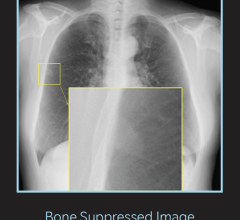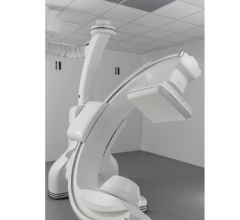
Getty Images
December 31, 2020 — After “COVID-19,” the term that most people will remember best from 2020 is likely to be “social distancing.” While it most commonly applied to social gatherings with family and friends, it has impacted the way many receive medical care. Historically, the United States has been relatively slow to broadly adopt telemedicine, largely emphasizing in-person visits.
However, the COVID-19 pandemic, especially in the spring of 2020, necessitated increased use of virtual or phone call visits, even prompting the Center for Medicare and Medicaid Services (CMS) to relax some of its regulations, primarily for video-based telemedicine. These large scale changes made telemedicine exponentially more popular than it had been even at the start of the calendar year.
But while this was a positive for those who otherwise would have delayed or foregone care due to the pandemic, a new study led by researchers in the Perelman School of Medicine at the University of Pennsylvania, published in JAMA Network Open, uncovered significant inequities, particularly by race/ethnicity, socioeconomic status, age, and when someone needed to use a language other than English.
“As we begin to establish novel ways of caring for our patients via telemedicine, it is critical that we make the foundation of this new way forward equitable,” said the study’s senior author, Srinath Adusumalli, M.D., an assistant professor of Cardiovascular Medicine and the University of Pennsylvania Health System assistant chief medical information officer for connected health. “We hope that regulatory and payer organizations recognize potential inequities that could be introduced by policies they create — which might include not reimbursing for telephone visits, and potentially leading to lack of access to care for particular patient populations, specifically those disproportionately affected by events like the COVID-19 crisis.”
The researchers, who included the study’s lead author, Lauren Eberly, M.D., a clinical fellow in Cardiovascular Medicine, examined data for nearly 150,000 patients of a large, academic medical system. All of these patients had been scheduled to have a primary care or ambulatory specialty visit via telemedicine between March 16 and May 11, 2020. This time period coincided with the first surge of coronavirus in the health system’s region, and was also amid stay-at-home orders in the area.
Of the patients who had telemedicine visits scheduled, a little more than half, roughly 81,000 (54 percent), completed their visits, the data showed. And within that segment, less than half, nearly 36,000, (46 percent) had visits conducted via video.
When these visits were broken down by the patients’ characteristics, some clear inequities were found. Overall, patients who were older than 55 were 25 percent less likely than the average patient to successfully complete a telemedicine visit they had scheduled, with people older than 75 being 33 percent less likely. People who identified as Asian were 31 percent less likely to complete a telemedicine visit, and those who did not speak English were 16 percent less likely. Using Medicaid for insurance also made patients less likely to successfully complete a telemedicine visit by 7 percent.
Because of the relaxation of CMS rules surrounding video-based telemedicine early in the pandemic, it’s important to consider that mode of telemedicine in a class by itself. So when those numbers were examined, some of the same groups showed even less favorable numbers than they had for overall telemedicine use. For instance, people over 55 were at least 32 percent less likely to complete a scheduled video visit, with those over 75 being 51 percent less likely.
Meanwhile, some groups of people were shown to have significant disparities in video-based telemedicine even if they hadn’t displayed them for overall telemedicine use. This likely means that they didn’t have problems accessing telemedicine if it was phone or audio-based, but video was not as accessible to them. More, women were 8 percent less likely to complete a video visit than men, Latinx patients were 10 percent less likely than White patients, and Black people 35 percent less likely than White people. Patients with lower household incomes were also less likely to complete a video visit successfully, with those making less than $50,000 being 43 percent less likely.
While the CMS has recently attempted to make phone call-based telemedicine easier to access from a reimbursement perspective, the researchers believe their findings show that there needs to be equal consideration for all forms of telemedicine moving forward.
“It is critical that complete payment parity for all types of telemedicine visits, by all insurance payers, is guaranteed permanently,” Eberly said. “Less reimbursement for telephone visits may disproportionately and unjustly hurt clinics and providers that care for minority and poorer patients.”
While insurance reimbursement is likely to have been a significant impact on the success of patients using telemedicine, Penn Medicine has long implemented a practical approach to root out technical issues that may play a role in access issues. Specifically, professionals within the health system work with patients to assess whether they have the technical ability to successfully have a visit. That includes checking Wi-Fi speed and whether the patient has devices physically capable of conducting the visit.
Something since the start of the COVID-19 outbreak that Adusumalli said Penn Medicine addressed was the inequity found for non-English speakers.
“One concrete thing that has already been addressed, based on the results of this study, was adding one-click interpreter integration for more than 40 video-based languages and greater than 100 audio-based languages for both inpatient and outpatient telemedical care throughout our enterprise,” he explained.
Moving forward, the researchers hope they can uncover more ways to make telemedicine work for everyone.
“We currently have broader research underway to better characterize what patient-specific and provide-specific barriers exist,” Eberly said. “If we can understand these barriers, it could help guide telemedicine implementation strategies that will benefit everyone.”
For more information: www.med.upenn.edu/


 December 10, 2025
December 10, 2025 









